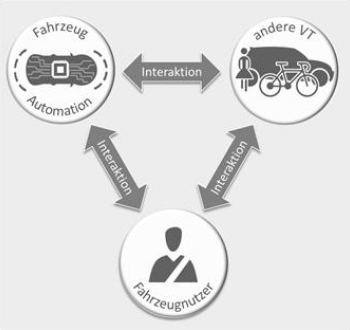@CITY - Automated driving functions

Project Description
@CITY develops a new, automated driving experience for safe, stress-free, efficient and comfortable driving in urban areas. Automated vehicles and intelligent traffic are the key elements of future urban traffic. Automated vehicles offer the driver the highest possible level of support in all traffic situations. The interaction between the vehicle and the driver and between the vehicle and pedestrians or cyclists, e.g. at intersections or roundabouts contributes to a better understanding of complex traffic situations. @CITY-AF automates driving in the city and thus generates benefit not only for the driver, but also for all road users.
More specifically, the @CITY-AF project implements the algorithms for situation understanding, high-precision map and precise self-localization as well as fusion and path planning approaches in automated driving functions. The focus is on automated driving over urban junctions with complex roundabouts and intersections, through bottlenecks with or without oncoming traffic and the interaction with pedestrians and cyclists. @CITY-AF addresses the most important challenges for comfortable, safe and efficient driving in the city. A major overarching goal of the project is to gain a common understanding of automated city driving, minimum operational requirements, system concepts including data requirements, interfaces and interactions among driver - automated vehicle - other road users.
Tasks of the Chair
The focus of the Chair of Traffic Engineering and Control (TUM-VT) is the analysis and modeling of the behavior of cyclists in complex situations. One focus of this is the identification and definition of the cyclist's driving strategies, for example in the formation of dynamic bottlenecks and other situations. It will be examined if the cooperation among cyclists and motorized road users is required in order to resolve complex traffic situations. In a simulation laboratory, a data collection will be carried out for a detailed description of the movement of cyclists and their interactions of all road users. A bicycle simulator is developed for a realistically simulated driving experience for test subjects. In subproject 4, the Chair of Traffic Engineering and Control is researching the reactions of cyclists to the behavior of automated vehicles. The communication strategies of cyclists in urban areas are examined using a bicycle simulator. Among other things, parameters for the objective and subjective road safety of cyclists in different situations are examined. Thresholds for the metrics describing interactions defined in the project are identified using simulator studies, interviews and questionnaires of cyclists.
| Keywords | Automated vehicles, interaction to vulnerable road users, driving behavior, bicycle simulator studies |
| Funding | Federal Ministry of Economoc Affairs and Energy |
| Partners | AUDI AG Continental Safety Engineering International GmbH Continental Teves AG & Co. oHG Daimler AG Delphi Deutschland GmbH Robert Bosch GmbH Man Truck & Bus AG Technische Universität Chemnitz Technische Universität Darmstadt Technische Universität München TRW Automotive GmbH Valeo Schalter und Sensoren GmbH ZF Group - TRW Automotive GmbH 3D Mapping Solutions GmbH |
| Duration | June 2018 to June 2022 |
| Contact | Georgios Grigoropoulos, Dr.rer.nat. Andreas Keler, Dr.-Ing. Matthias Spangler, Dr.-Ing. Heather Kaths |